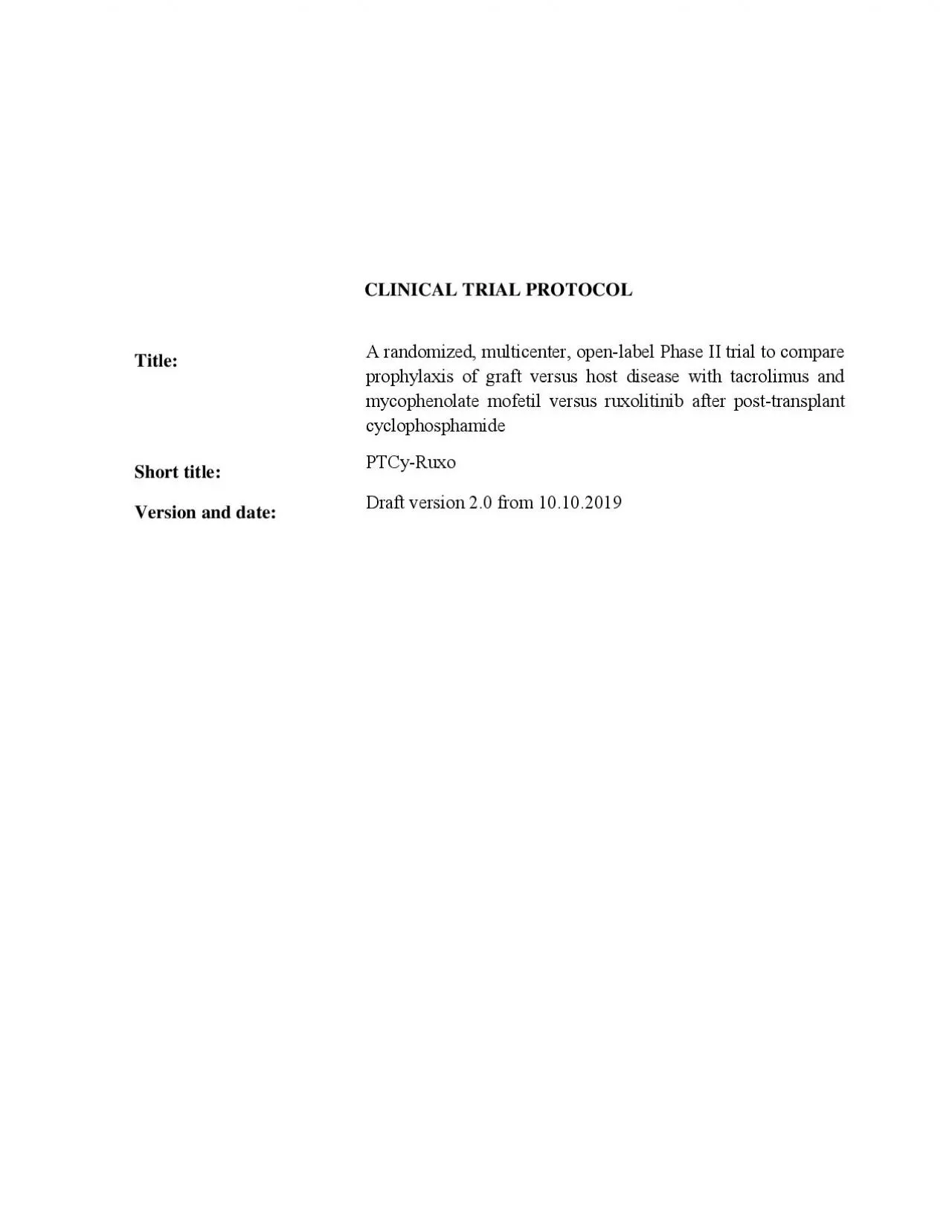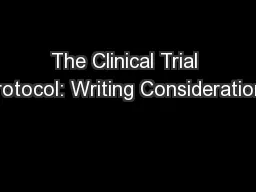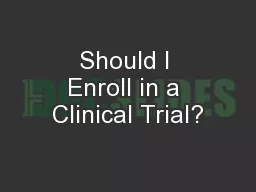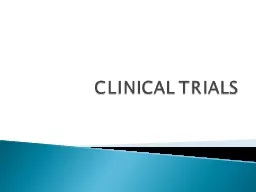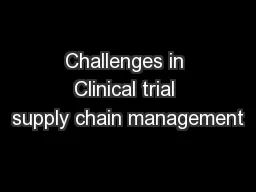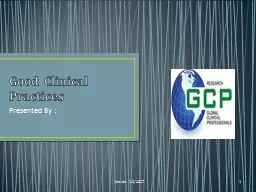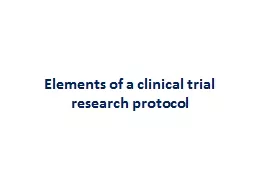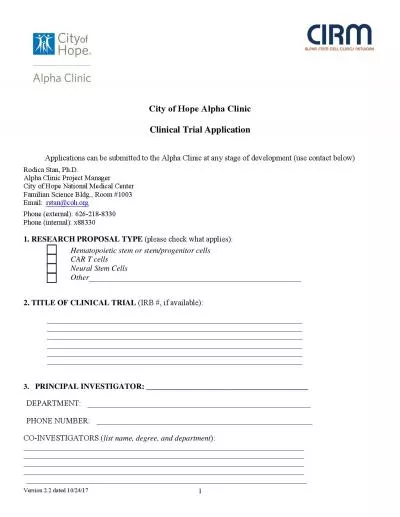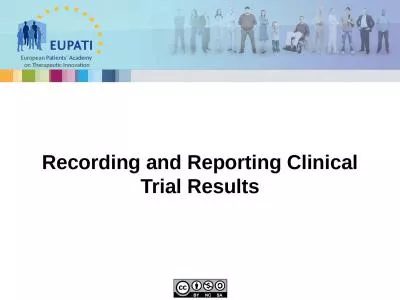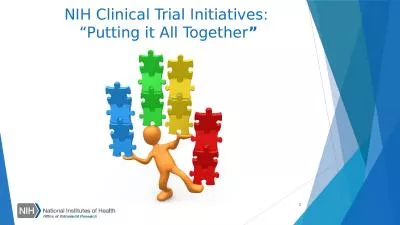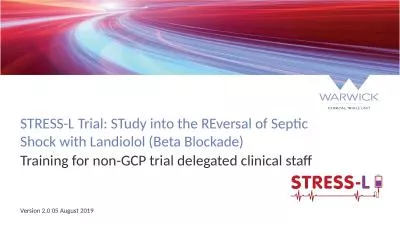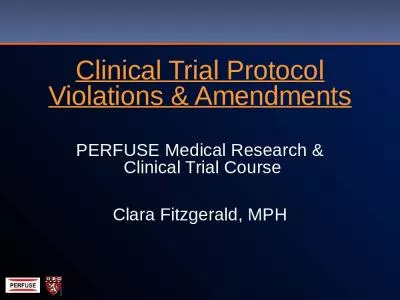PDF-RTCyRuxo Clinical Trial Protocol draft version 20 from 10102019
Author : holly | Published Date : 2021-09-10
CONFIDENTIAL Page 8 of RTCy ruxolitinib 33Acute graftversushost disease treatment 33Dose regimen and modification 34Drug supplies 35Other study treatments 35Concomitant
Presentation Embed Code
Download Presentation
Download Presentation The PPT/PDF document "RTCyRuxo Clinical Trial Protocol draft v..." is the property of its rightful owner. Permission is granted to download and print the materials on this website for personal, non-commercial use only, and to display it on your personal computer provided you do not modify the materials and that you retain all copyright notices contained in the materials. By downloading content from our website, you accept the terms of this agreement.
RTCyRuxo Clinical Trial Protocol draft version 20 from 10102019: Transcript
Download Rules Of Document
"RTCyRuxo Clinical Trial Protocol draft version 20 from 10102019"The content belongs to its owner. You may download and print it for personal use, without modification, and keep all copyright notices. By downloading, you agree to these terms.
Related Documents

